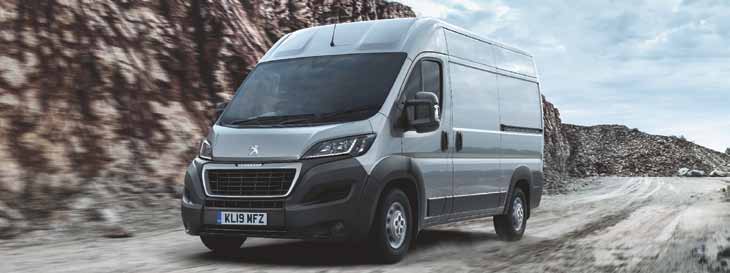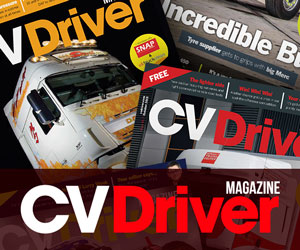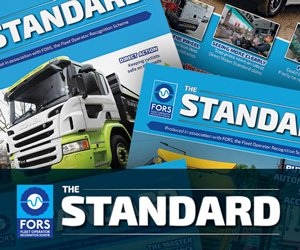
When it comes to the varying aspects of van fleet management, the importance of buying the correct new vehicles is a subject that tends to get overlooked
Many van operators chop their vehicles in for new ones of the same marque simply because that’s what they have always done. But as commercial vehicles become more technically advanced and more diverse in their sizes and applications, it is vitally important to study exactly what is available on the market at buying time or huge amounts of cash can be wasted.
Experts reckon that around 30% of companies are running the wrong size of vans and this is costing millions of pounds per year in wasted fuel, not to mention extra front end costs. Say for example Company A runs a fleet of 10 Ford Transits. For the past few years the slightly smaller Transit Custom has been available, which is cheaper to buy and cheaper to run. Chances are these vans won’t be fully loaded so in most cases the Custom will do just as well.
But size is just one problem the unwary van buyer faces. Read our top ten tips before making that all-important buying decision and see how much more cost-effective your van fleet will become:
1) Choose the right dealer
Remember the days when cars were displayed at the front of dealerships and the vans were hidden away in a tatty old shed round the back? Things have improved a great deal since then and nowadays, most dealers have separate experts to help buyers of commercial vehicles.
These staff should be able to guide you towards the right vans for your particular needs and they should also be able to advise on such matters as which options to choose and the differing finance packages available.
If your local dealer doesn’t have these facilities, we would strongly urge you to go somewhere else, as the advice experts offer may prove invaluable – and of course it is free.
2) Choose the right size
As mentioned above, around 30% of business vans are reckoned to be the wrong size for the jobs they are intended to carry out – and mostly the problem is that they are bigger than necessary. This means the fleets that own them have wasted money on front-end cost (the bigger the van, the higher the price) and will also be throwing money away on fuel costs, as bigger vans generally use more fuel.
Buyers should spend a little time examining EXACTLY what their vans will be expected to do and if for most of the time they will be running half empty, the chances are a smaller vehicle will do just as well.
Even if larger loads are to be carried occasionally, it is still worth considering buying the smaller vans and spot hiring bigger ones when necessary. Round our way, a 3.5-tonne long wheelbase Ford Transit can be hired for £55 per day.
3) Choose the right badge
Quite a few vans nowadays bear different badges but are in fact the same vehicle. For example the Citroen Dispatch, Peugeot Expert and Toyota Proace are clones of each other – and so are the Renault Kangoo/Mercedes-Benz Citan and Renault Trafic/Nissan PrimaStar/Fiat Talento. So does it really matter which manufacturer you choose?
Well yes actually, because although these vans are basically the same, they make differing amounts of money when you come to sell them – ie they have different residual vales.
As an example, Ken Brown, an expert at residual value guide CAP, reckons the Citan makes 20% more than the equivalent Kangoo at auction and although the Citan is more expensive to buy, it could still win the day on wholelife costs, which are a mix of front end price, running costs and residual value.
4) Choose the right models
Don’t forget that just as important as front-end price is the residual value of your vans – ie. what you get for them when you come to sell them.
If you have special requirements, you may be tempted to buy rather ‘oddball’ vans at awkward gross vehicle weights over 3.5-tonnes. If you do, you’ll find that few people want to buy them secondhand and their value will suffer accordingly. Nowadays, most of the main manufacturers offer ready-made conversions such as tippers, dropsides and Lutons, so it’s best to stick with these if you possibly can as they will find a ready market at selling time.
5) Choose the right extras
Now we come to the 64 thousand dollar question!Most vans are boxes on wheels, to which any number of extras can be added – most of which you will have to pay for, of course. All vans sold now have to have Electronic Stability Control (ESC), which will help alleviate sideways skids, and airbags and ABS brakes, so safety is pretty much catered for with standard vans (see No 6).
But what about a fancy stereo or alloy wheels? While most company buyers reject such ‘luxuries’, we must point out that when you come to sell your vans, they will make more money – and be snapped up quicker – with blingy bits added. In the case of metallic paint (usually around £400 as an option), the van could go for more than this above one with a flat paint job, so you could actually make a profit.
6) Don’t skimp on safety
As stated above, most vans nowadays come with a load of safety gear as a legal requirement but amazingly, some still don’t have a full bulkhead fitted as standard. In the case of an accident, any cargo on board will come flying forwards at an alarming rate of knots and possibly kill the occupants in the front, so for the sake of £150 or so, ignoring this option really isn’t worth it.
While we’re at it, don’t be tempted to buy cheap van racking. It will fall to pieces in the event of an accident and could cause injury too.
7) Choose the right colour
Remember those dreary grey BT OpenReach vans we used to see around everywhere? Choose a colour like that for your vehicles and they’ll be worth less at selling time than ones in, say, white or pillar box red.
Moss green is also apparently a big turn-off for second buyers. If you need to have weird coloured vans, see tip no 8 below.
8) Choose the right decals
There are still a few old-fashioned signwriters around but nowadays if you want a fancy paint job it’s best to get your vans “wrapped” – ie covered in special plastic coating that can be peeled off at selling time to reveal a nice clean exterior.
9) Fit ply-lining
One of the worst types of damage to a van is the dreaded reverse ‘ding’, in which a piece of cargo moves inside the van and causes a dent from the inside out.
These dings are virtually impossible to repair and will badly affect the price of your vans at selling time. Ply-lining costs around £300 and is essential, especially when dirty cargos are to be carried. At selling time, the lining can be ripped out to reveal a nice shiny load bay.
10) Study the fuel economy figures
It is surprising how many similar-sized vans have different fuel economy figures, so it’s worth spending some time studying these. The official figures are available at www.vanfueldata.dft.gov.uk
You’d be amazed at how a small change can make a huge difference to your company balance sheet. Did you realise that a van which returns 39mpg will use £320 more fuel over 100,000 miles than one which returns 40mpg?

